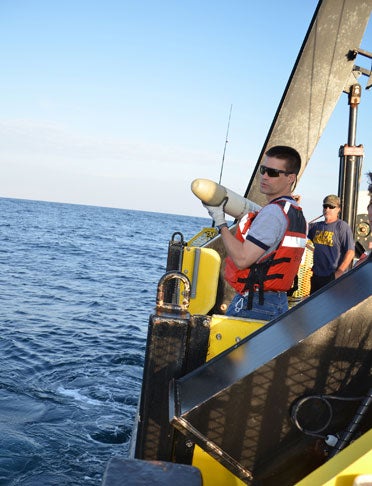
The US Naval Research Laboratory (NRL) and the Office of Naval Research (ONR) have developed and demonstrated waveguide-invariant-based methods in shallow-water environments off the New Jersey coast as part of the littoral depth discrimination experiment (LIDDEX).
The LIDDEX has been designed to make use of acoustic guide sources at the ocean surface in the development of passive sonar surveillance methods that are suitable for any littoral regions.
During the week-long sea-trials, conducted from the University of Delaware’s research vessel R/V Hugh R Sharp, low-level acoustic transmissions from two XF4s at variable depths, two expandable mobile ASW training targets (EMATT), and surface ships were recorded by the research team.
Transmissions were recorded by deploying a bottom-moored combined horizontal and vertical array, three bottom-moored vertical environmental acoustic recording system (EARS) arrays, as well as sonobuoys.
A US Naval Research Laboratory scientist Laurie Fialkowski said the project aim was to explore extremes of seasonal variations of the environment.
The data gathered during the trials, which include high-quality acoustic and the time-coincident oceanographic measurements, will be used in the development of passive signal processing methods.
Prone to changes in seasonal climate, littoral regions pose challenges to passive acoustic technologies due to high maritime traffic and noise concentration levels.
"After using the summer measurements to test and improve our methods, we will test them again in the winter environment," Fialkowski added.
Scheduled to undergo winter trials in early 2014, the programme will now focus on collecting oceanographic data using the same recording systems and low-level controlled sources.
Image: An expendable mobile ASW training target (EMATT) being deployed for the US NRL’s Littoral Depth Discrimination Experiment 2012. Photo: courtesy of the US Naval Research Laboratory.





